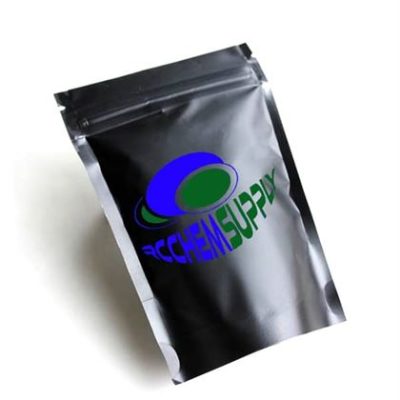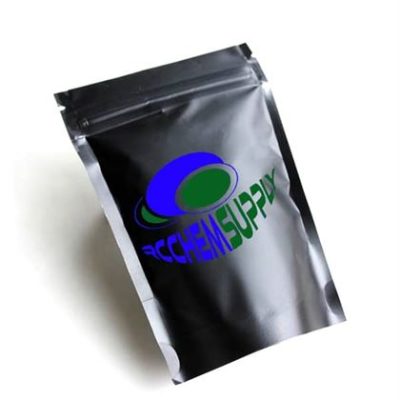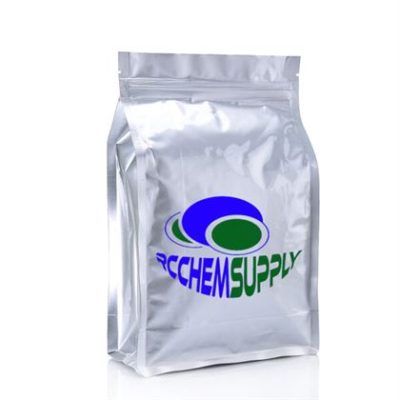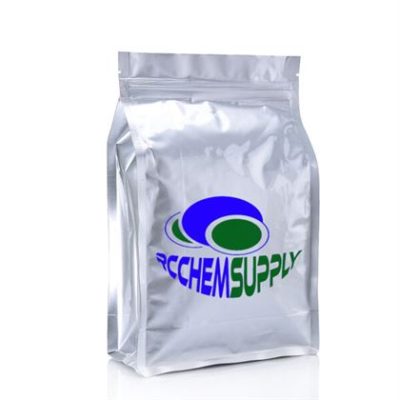Buy Dissociative online
2-FDCK Powder Online 98% Purity Quality
You can buy 2-FDCK Powder Online. It has almost 98% Purity. It is high-quality. 2-FDCK is a dissociative sedative. It's also called 2-Fl-2′-Oxo-PCM, Fluoroketamine, and 2-FDCK. There is almost no data on the pharmacology, digestion, or harmfulness of 2-fluorodeschloroketamine. buy 2-FDCK Powder Online
Buy Dissociative online
2fdck legal status USA
2-Fl-2'-Oxo-PCM is a new dissociative drug of the arylcyclohexylamine family that is also known as 2-Fluorodeschloroketamine, 2-FDCK, and incorrectly as 2-Fluroketamine, Fluoroketamine, and 2 fdck usa. Ketamine and deschloroketamine are chemically related (DCK). Although research is limited, it is considered to operate as an NMDA receptor antagonist. Buy 2 fdck online from RcchemsupplyTRADING CONDITIONS
- Availability: In Stock
- Packaging: Aluminum foil bag package done by an expert
- Purity: 99.9%
- Transportation: Delivery done by EMS, DHL, FEDEX, UPS, and TNT
Buy Dissociative online
2-BDCK for sale
Bromoketamine, also known as 2-BDCK or 2-Br-DCK, is a novel dissociative compound belonging to the arylcyclohexylamine class. It is a close analog of ketamine, with the exception of a tiny change in the chain, where the chlorine atom is substituted by a bromine atom. 2-BDCK has a similar physiological impact as ketamine (inhibition of reflexes, anesthesia, disorientation, dissociative effect). Bromoketamine (2-BDCK) is a relatively new drug that is allowed in several countries. It is solely sold to compare pharmacological activity with ketamine.Buy Dissociative online
3 MEO PCE for sale
3-MeO-PCE, also known as Methyl Eticyclidine, is a chemical substance that has been sold as a designer drug. 3-MeO-PCE is closely related to PCE and PCP. . 3 Meo pce buy | 3-MeO-PCE, also known as Methyl Eticyclidine, can produce dissociative effects including feelings of detachment from one’s environment or oneself. The substance also produces effects such as excitation and hallucinations.
Buy Dissociative online
Buy 3-Fluoro-PCP (3'-F-PCP) online
3-fluoro-PCP is a dissociative arylcyclohexylamine designer drug. It is illegal in the United States and most other countries, but it's still sold on the black market, mostly for recreational use. The DEA was first made aware of 3-fluoro-PCP in October 2020 after a raid in Slovenia yielded 3 kg of the substance. When ingested orally, typically at doses between 10 mg and 15 mg, 3-fluoro-PCP produces effects that are comparable with those of phencyclidine and ketamine. These effects include sensations of being disconnected from
Buy Dissociative online
Buy 3-ME-PCPY online
3-Me-PCPy belongs to the arylcyclohexylamine class of dissociative compounds. It is PCPy's 3-methyl derivative. It has many of the same features as 3-MeO-PCP and 3-Me-PCP, but it also has a slight stimulating effect at lower doses, which we think researchers will appreciate. It has many of the same features as 3-MeO-PCP and 3-Me-PCP, but it also has a slight stimulating effect at lower doses, which we think researchers will appreciate! 3-Me-PCPy already has a wikipedia article, but it is incomplete..
Buy Dissociative online
3-MeO-PCP for sale
3-Methoxyphencyclidine (3-MeO-PCP) is a dissociative anesthetic drug that has been sold online as a designer drug. It induces a state similar to PCP at lower doses. This article discusses the pharmacology, effects, addiction potential, and legality of 3-methoxyphencyclidine or 3-MeO-PCPBuy stimulants online
Buy 5-MeO-DMT USA
5-MEO-DMT stands for 5-methoxy-N,N-dimethyltryptamine. It's a synthetic substance known for inducing intense psychedelic experiences. Unlike regular DMT, which is often linked to the Ayahuasca brew, 5-MEO-DMT has a unique chemical structure that sets it apart. The experience it offers is typically shorter but far more intense, often described as a complete ego dissolution or a "toad venom" experience, due to its presence in the venom of the Bufo alvarius toad.Buy psychedelics online
Allylescaline for sale USA
Allylescaline is a psychedelic drug that has a similar effect to LSD. It belongs to the chemical class of substituted phenethylamines, which means it contains an amino group with an additional methyl and ethyl group. The best way to compare allylescaline to other psychedelics like LSD or DMT is through its dosage level. At Rcchemsupply, we're excited to offer some of the best Allylescaline products on the market.
Buy Dissociative online
Buy Deoxymethoxetamine (DMXE, 3'-methyl-2-oxo-PCE)
DMXE (deoxymethoxetamine, also called 3D-MEXE, methoxetamine, or 3-ME-2-oxopCE) is a dissociative drug in the arylcyclohexylamine family that has been developed as an analog of MXE with similar stimulation, dissociative, and anesthetic effects. The dissociative products of DMXE are hydrochlorides similar to MXE, except that the method is replaced by methylene oxygen and removed from the deoxy.rc vendorBuy Dissociative online
Fluorexetamine for sale
Did you know that Fluorexetamine is rapidly gaining popularity in psychiatric research for its potential therapeutic applications? . Fluorexetamine, also known as 2'-Oxo-PCE, is a novel research chemical that falls into the dissociative class of substances. It belongs to the arylcyclohexylamine family, which includes well-known compounds such as ketamine and PCP. While Fluorexetamine shares some structural similarities with these substances, it possesses unique characteristics that set it apart.Buy Dissociative online
Buy Dissociative MXiPr
MXIPR is pleased to announce the free publication of the Hydroxychloride (3-MEO-2-oxo-PCIPR). This is a new arylcyclohexylamine drug with dissociative properties. It combines all our expanded aryLcycloHexylamine molecules with these properties.Buy Dissociative online
Buy N-Ethyl-ketamine online
N-Ethyl-Ketamine (NENK) is a designer drug that shares similarities with ketamine, a dissociative anesthetic known for its hallucinogenic and sedative effects. This compound, also referred to as ethketamine or 2-Cl-2'-Oxo-PCE, has been available for purchase online since around September 2012 and has been detected in seized drug samples in the UK and other European countries. In terms of its pharmacology, NENK acts as an NMDA receptor antagonist in mice and also functions as an AMPA and 5-HT2 receptor agonist.Buy Dissociative online
NEP (N-Ethyl-Pentedrone) | What is NEP?
N-Ethyl-nor-pentedrone (otherwise called N-Ethylpentedrone, Ethyl-pentedrone, or all the more regularly, NEP) is a lesser-known novel energizer substance of the cathinone class that produces animating, euphoric, and gently entactogenic impacts when controlled. Top Grade Purity, fair prices, Fast guaranteed deliveryBuy Dissociative online
Buy Tianeptine Sulfate Powder Online
Looking to buy Tianeptine Sulfate Powder? You’ve come to the right place! Rcchemsupply.net is the best place to buy Tianeptine Sulfate Powder online. We offer high-quality Tianeptine Sulfate Powder at competitive prices, and we offer a variety of payment methods so that you can buy Tianeptine Sulfate Powder online with ease.Buy Dissociative online
Buy Fentanyl Powder online
Fentanyl is a white, powdery substance that can be found at many online pharmacies, Rcchemsupply, and some online chemical retailers. Fentanyl powder can be used by injection or as a patch to treat pain. When purchasing fentanyl powder, you will need to be aware of several safety precautions. There is a risk of mixing Fentanyl powder with other drugs, like cocaine, morphine, methadone, 5CL-ADB-A or tramadol. It is also possible to inhale or swallow Fentanyl powder or spit it out.Buy Dissociative online
What is ketamine horse tranquilizer?
Buy Dissociative online – dissociatives drugs list | Dissociative Research Chemicals
Dissociation can manifest as feeling detached from reality, observing oneself from outside the body, or experiencing memory gaps. It’s like being in a fog where things seem unreal or dreamlike. Seeking professional help is crucial if dissociative experiences significantly impact daily life.
Dissociative drugs alter perceptions of reality, creating a sense of detachment from the self and environment. These effects stem from their action on the brain, particularly by blocking or altering neurotransmitter activity. Whether you’re looking to buy dissociative drugs, chemicals or research substances for legal purposes, we’ve got the widest assortment of unique designer compounds to choose from, including those that may cause memory loss and disconnected identities. Times of stress can worsen symptoms for a while, making them easier to see.
Dissociative substances work by disconnecting or “dissociating” areas of the brain which control feelings, sensations and consciousness from each other. They can produce a numbing effect and feelings of detachment from one’s body and the external world.
Key Characteristics:
- Perceptual distortion: Changes in sight, sound, and time perception.
- Emotional detachment: Feeling disconnected from emotions.
- Out-of-body experiences: Sensation of being outside one’s body.
Common Dissociative Drugs
Ketamine is a well-known dissociative originally used as an anesthetic. It’s also used recreationally and medically for its rapid antidepressant effects.
- PCP (Phencyclidine)
PCP, or Angel Dust, was initially developed as an anesthetic but is now largely known for its hallucinogenic and dissociative effects.
- DXM (Dextromethorphan)
DXM is a common cough suppressant that, in high doses, can produce euphoria and dissociation.
- Nitrous Oxide
Commonly known as laughing gas, it’s used medically and recreationally for its short-lived dissociative and euphoric effects.
- Salvia Divinorum
A plant-based dissociative, Salvia induces intense, short-term hallucinations and detachment from reality.
Lesser-Known Dissociative Research Chemicals
- Methoxetamine (MXE)
An analog of ketamine, Methoxetamine offers potent dissociative and anesthetic effects. It’s often explored for its potential therapeutic applications.
- 3-MeO-PCP
Similar to PCP, 3-MeO-PCP provides long-lasting dissociative and hallucinogenic effects. Researchers study it for its neuropharmacological properties.
- Diphenidine
A dissociative with effects similar to ketamine, Diphenidine is used in research to understand its impact on NMDA receptors.
Buy Dissociative online
Positive Effects:
- Pain relief: Effective in managing chronic pain.
- Antidepressant properties: Rapid mood improvement in some individuals.
- Anesthetic use: Widely used in medical procedures.
Negative Effects:
- Cognitive impairment: Memory and concentration issues.
- Physical harm: Risk of injury due to lack of coordination.
- Addiction potential: Some dissociatives can be habit-forming.
Clinical Applications
- Anesthesia
Dissociatives like ketamine and nitrous oxide are used in surgical settings for their anesthetic properties.
- Depression Treatment
Ketamine has shown promise in treating treatment-resistant depression, offering rapid relief from depressive symptoms.
- Pain Management
Used for their analgesic effects, dissociatives can help manage chronic pain conditions.
Legal Status
Ketamine
- Schedule III in the US: Legal for medical use under supervision.
- Controlled in many countries due to abuse potential.
PCP
- Schedule II in the US: Strictly regulated with high abuse potential.
DXM
- Over-the-counter in many countries but regulated due to misuse risks.
Research Chemicals
- Varies widely: Often legal for research but not for human consumption.
Symptoms of Dissociative Disorders
Individuals with dissociative disorders may experience memory loss, amnesia, or a sense of detachment from their emotions, thoughts, or identity. Symptoms can manifest as depersonalization, derealization, and even the presence of multiple identities.
Other signs may include experiencing flashbacks to traumatic events, severe distress, or disruptions in daily functioning. These symptoms, which can be indicators of major dissociative disorders, often arise as a coping mechanism to deal with overwhelming stress or trauma, highlighting the complex nature of these conditions.
Causes and Risk Factors of Dissociative Disorders
Dissociative disorders typically result from chronic trauma or traumatic events, especially during early development. Emotional abuse, neglect, or exposure to torture can contribute to the development of these disorders. Personal history of mental illness or substance use may also increase the risk.
Additionally, genetic and physical causes, combined with environmental factors, play a role in the manifestation of dissociative disorders. These factors can lead to symptoms such as memory loss, derealization, and depersonalization, which are characteristic of this type of dissociative disorder.
Whats the worst thing your dissociation does to you?
Dissociative episodes can be unsettling, causing a sense of detachment from reality. The worst impact can be losing time or memory gaps, making it challenging to recall crucial events or conversations. Seeking professional help is vital to manage dissociative symptoms effectively.
Treatment and Management of Dissociative Disorders
Treatment and Management of Dissociative Disorders: The treatment of dissociative disorders typically involves psychotherapy, including cognitive-behavioral therapy and dialectical behavior therapy. Eye movement desensitization and reprocessing (EMDR) has also been shown to be an effective treatment for dissociative disorders.
Medications such as antidepressants may also be prescribed to manage symptoms like depression, anxiety, or mood swings. It is essential to create a safe environment for individuals with dissociative disorders and provide support through therapy and counseling. Developing coping strategies and addressing underlying trauma are crucial aspects of managing dissociative symptoms effectively.
Diagnosis of Dissociative Disorders
Diagnosis of Dissociative Disorders: Diagnosing dissociative disorders involves a comprehensive evaluation by a mental health professional, often including a detailed assessment of personal history, symptoms, and any potential traumatic experiences. The DSM-5, the diagnostic manual used by healthcare professionals, outlines specific criteria for identifying different types of dissociative disorders based on the presence of particular symptoms.
Validated scales such as the Dissociative Experiences Scale may also be utilized to measure dissociative experiences in individuals. Neuropsychological testing and brain imaging can be helpful in understanding the underlying mechanisms of dissociation, as outlined in the Diagnostic and Statistical Manual of Mental Disorders (DSM-5).
Related Conditions and Complications
Individuals with dissociative disorders may experience related conditions and complications such as posttraumatic stress disorder (PTSD), complex trauma, substance abuse, and mood disorders. Complications can also include difficulties in interpersonal relationships, functioning at work or school, and maintaining a sense of identity.
It’s crucial for health care professionals to address these comorbidities to provide comprehensive care for those with dissociative disorders. Understanding and managing these related conditions is essential for effective treatment and improved outcomes.
Research and Future Directions
- Neuropharmacology
Studies focus on understanding how dissociatives affect NMDA receptors and other brain pathways.
- Therapeutic Potential
Ongoing research explores new therapeutic applications, particularly for mental health disorders.
- Safety and Efficacy
Investigating the long-term effects and safety profiles of these drugs to ensure responsible use.
Comparison Table of Common Dissociatives
|
Drug |
Primary Use |
Duration |
Legal Status |
|
Ketamine |
Anesthetic, Depression |
1-2 hours |
Schedule III (US) |
|
PCP |
Recreational |
4-6 hours |
Schedule II (US) |
|
DXM |
Cough Suppressant |
3-6 hours |
OTC (regulated) |
|
Anesthetic, Recreational |
1-5 minutes |
Uncontrolled |
|
|
Salvia Divinorum |
Recreational |
15-30 minutes |
Legal (varies by state) |
Safety Precautions
- Medical supervision: Always use under professional guidance.
- Dosage control: Avoid overdose risks.
- Awareness of legal status: Understand the regulations in your region.
Key Takeaways
- Dissociatives offer unique perceptual and emotional experiences.
- They have significant therapeutic potential but come with risks.
- Legal status varies widely, necessitating awareness and caution.
How dissociatives are used?
- Dissociatives are typically consumed by snorting, orally, intramuscularly, or inhaled.
- The unique effects of each dissociative can vary widely amongst users.
Dissociatives that are commonly utilized
- MXiPr
- 3-ME-PCPY
- Fentanyl Powder
- Buy Methylone online
- Buy 2FDCK online
- 3MEO – PCP
- People who are psychologically dependent on dissociative substances may experience a strong desire to use them while they are in certain environments or socializing with friends. Physical dependence develops when a person’s body adjusts to the presence of dissociative substances and becomes accustomed to functioning with the drugs present.
- Browse our extensive catalog of dissociative research chemicals for sale online and choose from a variety of mind-altering compounds to experiment with legally.
Help and Support Resources
If you or someone you know is struggling with dissociative disorders, seeking help and support resources is crucial. Organizations such as the International Society for the Study of Trauma and Dissociation (ISSTD) offer valuable information and assistance.
Support groups, therapy options like cognitive behavioral therapy, and helplines can provide guidance and comfort. Mental health services, including those specializing in dissociative disorders, can offer personalized care and treatment. Remember, you are not alone in this journey towards healing and recovery.
FAQs
1. What are dissociative drugs?
Dissociatives alter perception, creating a sense of detachment from reality.
2. How do dissociatives work?
They primarily affect the brain’s NMDA receptors, altering neurotransmitter activity.
3. Are dissociatives safe?
They can be safe when used responsibly under medical supervision, but they have risks, including cognitive impairment and addiction.
4. What is the most common dissociative drug?
Ketamine is the most commonly used dissociative in both medical and recreational settings.
5. Can dissociatives be used for depression?
Yes, ketamine has shown promise in treating treatment-resistant depression.
6. Are dissociatives legal?
Legal status varies; some are controlled substances, while others are legal for research.
7. What are the risks of using dissociatives?
Risks include cognitive impairment, physical harm, and addiction potential.
8. How are dissociative research chemicals studied?
They are studied for their neuropharmacological properties and potential therapeutic applications.
How can you tell if someone is dissociating?
Dissociation can manifest in various ways, and it’s important to be observant of certain signs that may indicate someone is dissociating. Some common signs of dissociation include:
– Blank or glazed-over look in their eyes
– Seeming disconnected from their surroundings or the conversation
– Memory lapses or difficulty recalling recent events
– Changes in behavior or personality
– Feeling like they are observing themselves from outside their body
If you notice these signs in someone, it’s essential to approach them with understanding and support.
Encouraging them to ground themselves through deep breathing, focusing on sensory experiences, or seeking professional help if needed can be beneficial. If you have concerns about someone who may be dissociating, offering a supportive and non-judgmental presence can make a difference.
What are the 4 stages of dissociation?
Dissociation is a mental process where a person disconnects from their thoughts, feelings, memories, or sense of identity. There are generally four stages of dissociation:
1. Normal waking consciousness: The individual is fully aware of their surroundings and experiences a coherent sense of self.
2. Dissociative amnesia: In this stage, the person may have gaps in their memory or forget important personal information.
3. Depersonalization: The individual may feel detached from themselves, as if they are observing their own actions and thoughts from outside their body.
4. Derealization: This stage involves feeling disconnected from the external world, as if it is unreal or distorted.
These stages can vary in intensity and duration depending on the individual and the underlying cause of dissociation. If you or someone you know is experiencing dissociation, it’s important to seek help from a mental health professional for evaluation and support.
What are the different types of dissociative disorders?
- Dissociative identity disorder (DID): People with DID have two or more distinct identities or personality states. They may experience gaps in memory about everyday events and personal information.
- Dissociative amnesia: This involves sudden, unexpected episodes of memory loss that cannot be explained by normal forgetfulness. The person may not be able to recall personal information or past events.
- Depersonalization/derealization disorder: People with this disorder experience persistent or recurrent feelings of detachment from their own body or mental processes (depersonalization) or from their surroundings (derealization).
- Unspecified dissociative disorder: This is used when a person has dissociative symptoms that do not meet the full criteria for any of the other specific dissociative disorders.
- Other specified dissociative disorder: This is used when a person has an identifiable cause for their dissociative symptoms, such as chronic stress, brainwashing, or a dissociative tranceDissociation and dissociative disorders .
What are dissociatives used for? Dissociatives (also referred to as 'dissociative anesthetics') are a class of psychedelic drugs. This class of drug is characterized by distorted sensory perceptions and feelings of disconnection or detachment from the environment and self. The word dissociative means detached from reality




















